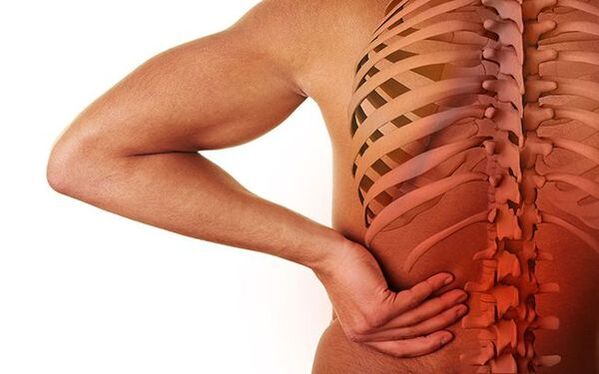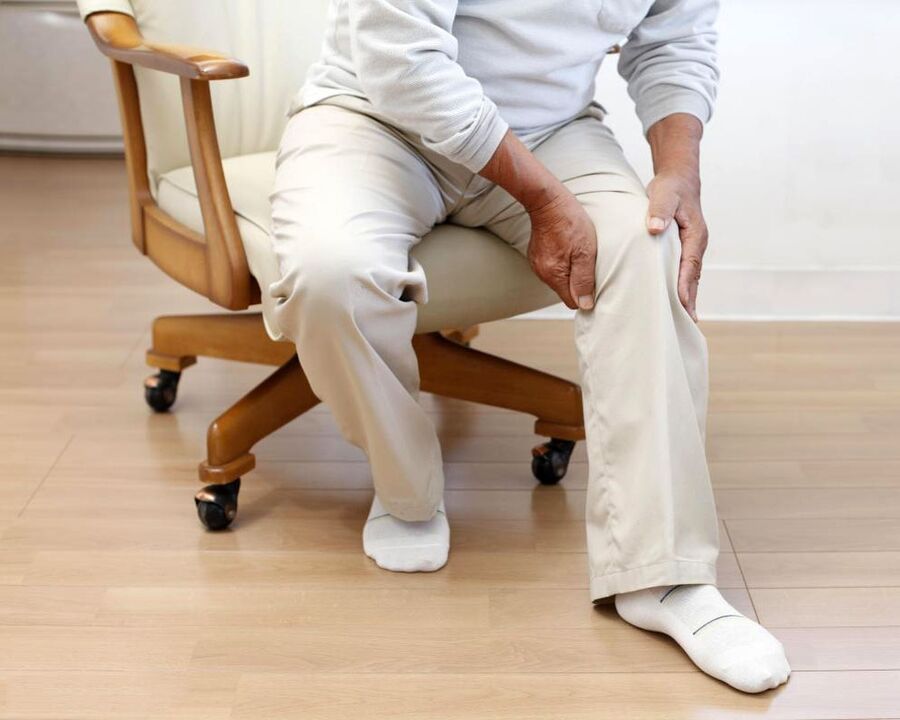Osteochondrosis most often has a long course. Therefore, the first signs in men and women may appear many years after the onset of the pathology. Since the pathology leads to many complications, timely treatment and diagnosis of the disease helps to slow down the negative processes of the body.
Consequences of osteochondrosis
Timely diagnosis of osteochondrosis is a need that almost every person faces.
This can be explained by the fact that the disease causes a number of specific disorders in the body, and as they progress, the complications can affect different parts. The most common of them are:
- Severe headache up to migraine;
- Partial hearing loss;
- Reduced visual ability;
- Radiculopathy (also known as radiculitis);
- VSD or various autonomic dysfunctions;
- Dysfunction of the urogenital system;
- Intervertebral hernia;
- Sciatica;
- Spondylosis, osteophytosis;
- Spondyloarthrosis;
- Lumbodynia and lumbago;
- Scoliosis.
These complications develop due to damage to the blood circulation and innervation of the spine, which has a negative effect on the internal organs and departments.
In severe cases, it has a negative effect on the heart and lungs, which can lead to heart attack, heart attack, stroke, etc.
First signs
There are certain first signs that indicate that the pathology has begun to develop.
Patients most often ignore them, consider them insignificant and are associated with their lifestyle - prolonged sitting, overexertion, heavy lifting.
In general, this is true, but these factors provoke the progression of osteochondrosis.
As a result, it is initially accompanied by a number of symptoms.
The mild stiffness in the morning is not particularly intense, but as it progresses, it becomes more frequent. The mobility of the affected area may gradually decrease. Unpleasant sensations also appear in the event of intense strain. In the first stage, pain as such is usually not observed. It starts from the second stage.
Symptom groups
Symptoms of osteochondrosis develop. Accordingly, doctors divide them into several groups according to the mechanism of progression. In this way, it is possible to identify the most affected sections and tissue types.
Static syndrome
Static syndrome primarily refers to disorders of bone tissue. As a result, the shape of the vertebrae changes, which leads to deformation of the spinal column with the formation of various types of curvature. In this case, pathological mobility of the vertebrae is observed. Poor posture manifests as:
- Kyphosis;
- Kyphoscoliosis;
- Scoliosis;
- Lordosis.
Static syndrome often results in impaired joint mobility. In advanced cases, the patient cannot turn his head or straighten up completely.
Neurological

The neurological symptom complex is caused by damage to nerve tissue. At the same time, at the very beginning, the sensitivity of some areas of the skin is simply damaged. The motor ability of the limbs and the strength of muscle contractions also decrease.
But the main manifestation of the neurological syndrome is pain of different intensity and localization. It is caused by compression and irritation of the roots originating from the spinal cord. In the first stage, it usually manifests simply as a local discomfort. As the pain syndrome progresses, it spreads to the areas of the body innervated by the affected root. Numbness, tingling, goosebumps and skin sensitivity are common.
In this pathology, motor changes are observed less often than sensory ones. Depending on the degree of progression of osteochondrosis, paresis and even paralysis can be felt. An example is paresis or limited voluntary movement of the lower limb on both sides due to lumbar osteochondrosis.
It's worth it
Vascular symptoms occur for approximately the same reason as neurological symptoms. That is, the veins and arteries are compressed by the vertebrae, which leads to the development of the corresponding symptoms.
This effect is most often manifested in cervical osteochondrosis. The largest number of large ships are present in this section. As a result of the negative impact on them, cerebral hypoxia begins to develop, which can lead to nausea, dizziness, loss of consciousness, hearing and vision impairment.
If the tone of the sympathetic system of the central nervous system changes, the irritation of the nerve plexus increases. Since it is located in the spine, the results also affect the blood vessels.
The most common manifestation of this disorder is a fairly prolonged spasm of peripheral vessels, followed by chronic ischemia and oxygen starvation of internal organs.
Trophic
The combination of the previous three syndromes can cause other disorders, especially trophic syndrome. Ulcers can occur due to a decrease in the nutrition of the tissues and the disruption of the innervation of certain parts of the skin. In this case, neurological and vascular factors play the biggest role.
Manifestations of pathology
Osteochondrosis can manifest itself with different symptoms. This can be explained by the fact that a certain class affects certain areas, so the signs of the disease may differ from each other.
Cervical
The cervical spine is characterized by the following symptoms:
- Dizziness, even fainting, when turning the head suddenly;
- Pain in the shoulders, arms, chest, teeth;
- Spots and spots before the eyes;
- Deterioration of vision and hearing, tinnitus;
- Voice change and numbness of the tongue;
- Headache that usually gets worse with movement. Painkillers cannot affect their intensity.
Such symptoms can be present for a long time and during exacerbations. Some signs are often mistaken for other pathologies, such as dental or otolaryngological problems.
Chest
With thoracic osteochondrosis, they feel:
- Pain when bending, lifting arms or one arm, between the shoulder blades and in the chest area (often confused with heartache);
- Increased pain at night, as well as movement, hypothermia, increased physical activity;
- Increased pain when moving the chest (exhalation and inhalation);
- Disturbance of the innervation of certain areas, numbness and goosebumps on the skin;
- Itching, burning, coldness in the legs;
- Painful attacks in ribs when walking;
- Feeling of a chest squeezed by a ring, shortness of breath.
Thoracic osteochondrosis has a rich localization in the manifestation of the pain syndrome. But it is precisely because of the greatest involvement of the chest that many people confuse it with a heart attack and a heart attack.
Lumbar
Lumbar osteochondrosis greatly affects the functioning of the internal organs of the pelvis and lower limbs, although it can also cause pain in the chest area. The most common signs of the disease:
- Sharp and painful pain in the lumbar region;
- Increased pain during movement or exertion;
- Pain in the abdominal organs, legs, sacrum;
- Lower limb innervation disorder;
- Inability to perform certain movements, such as bending and turning;
- The desire to maintain a certain posture.
When the lumbar region is affected, exacerbations most often occur due to certain external factors, such as increased load, heavy lifting or hypothermia. In this case, many people say that "the back is stuck". During a painful attack, the mobility of the department is reduced to a minimum.
Joints

Osteochondrosis of the joints is manifested by:
- Reduced mobility of the affected area (most often the shoulder, hip or knee joint);
- Severe pain;
- Increased pain when moving or lifting the limb;
- The range of motion is significantly reduced;
- By palpation, formations on joints and soft tissues can be observed;
- Swelling of the affected area;
- Redness, numbness, stinging sensation on the skin.
Due to damage to the joints, a person is forced into a forced position in order to reduce the movement of the joint and, accordingly, the pain. If the symptom persists, it can lead to soft tissue abnormalities, including atrophy.
Pain syndrome
Pain in osteochondrosis in the first stages is usually temporary. As they progress, they become longer and more intense. The result is the general presence of pain in everyday life.
The pain is usually annoying and aching. During an exacerbation, the symptom is so intense that it can even completely deprive you of mobility, causing muscle spasms.
Forecast
If we talk about the prognosis, then osteochondrosis itself is an incurable disease. At the initial stage, it is possible to receive high-quality treatment and slow down the pathology before serious symptoms appear. The longer the pathology progresses without treatment, the greater the negative impact on the body. Accordingly, home treatment is less effective and takes longer. If the pathology continues to serious complications, surgical intervention may be necessary.



















